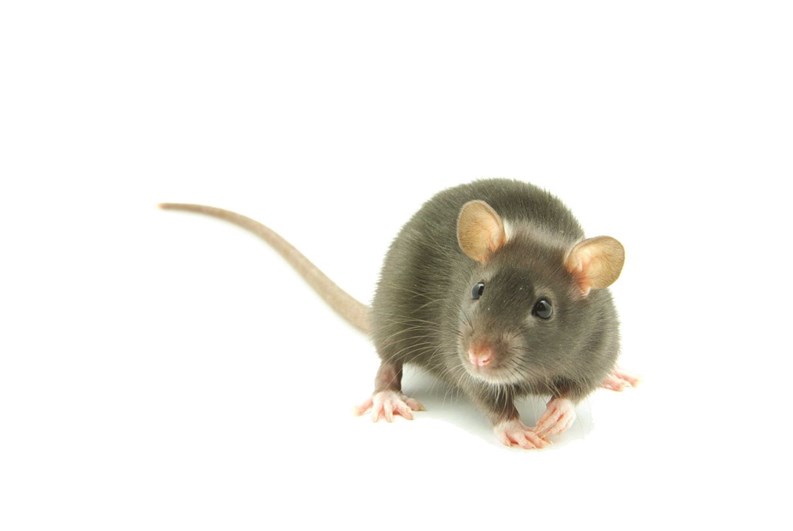Pests are a part of life. Wherever there are people, vermin of one kind or another are sure to follow. This is particularly true in an ultra-dense urban environment like New York City, where our rodents and cockroaches are practically legendary. These urban pest animals are not merely gross, however—many of them pose threats to humans, pets and property, so controlling or eliminating them is a major concern for all boards and managers.
Rats, Roaches and Mice
The New York City rat is well known to anyone who has ever taken a subway, and mice inhabit apartment buildings, even clean ones, fearlessly. Cockroaches, too, are ubiquitous. But the greatest threat to the five boroughs right now is a newer arrival: the bedbug. Whether because of global warming, insect rhythm, or just bad luck, this old pest has experienced a renaissance in 2014 New York.
“Although it hasn’t been in the news recently, we’re finding that the bedbug issue has not abated at all,” says Arthur Katz, president of Knockout Pest Control, a pest control company in Uniondale. “It’s still a serious issue. Ten years ago, we never got a bedbug call. I was in business for 30 years and never faced that issue. Bedbugs have made a tremendous impact on the co-ops and condos of New York.”
Sabrina Weinstein, director of communications of Global Pest Control in Airmont, New York, agrees. “The bedbug situation doesn’t slow down. We’re dealing with it all over the city from the most prestigious apartment buildings to the opposite. It’s everywhere.”
And while mice and roaches are bad, bedbugs can feel like a Biblical plague. They pose an enormous challenge for pest control companies because they are so hard to get rid of completely.
Bedbugs
“There are a lot of misconceptions about how to handle a bedbug situation,” Weinstein says. “People are told to clean out their apartments, and they diligently go through their belongings and generously give clothing away to Goodwill shops or put their furniture outside without telling anyone that it has bedbugs.” Thus the bedbugs spread happily from one apartment to another.
“There are also situations where building managers or pest-control employees are aware of a tenant with an infestation but they just can’t get into the apartment to treat it,” she says. “Then you have a higher probability that surrounding units will also be infested. Because bedbugs don’t discriminate. If they’re in one apartment, they’ll just organically grow and multiply and continue on to the next place.” In the past decade, they have proved very, very good at doing just that.
Like a Biblical plague, bedbugs can befall a building if only one resident has sinned. “You could also have a situation where they did the extermination, and the heat treatment, and did everything right, and there’s still a problem… and then they discover that one apartment has a clutterer, and that’s the cause of it all,” Weinstein says.
These little creatures can wreak havoc on a building—even an exclusive one. If not properly treated, they can even impact sale prices. “Bedbugs are still a large problem because of the nuisance, and also the economic impact on tenants and building owners,” Katz says.
Mice and rats have been bothering humans for tens of thousands of years—basically, since the switch from hunting and gathering to farming. This is why cats were originally domesticated in Egypt 13,000 years ago—and why buildings tend to allow cats in apartments more often than dogs. But the new and improved (from the pests’ perspective) bedbug has necessitated new techniques in pest control. For example, pesticides work on bedbugs about as well as guns worked on Godzilla.
“Many pesticides do not work on bedbugs because they can mutate,” says Jennifer Erdogan, director of the bedbug division at Bell Environmental Services in Fairfield, New Jersey. “They’re genetically capable of evolving to be immune to the pesticide. If parents were sprayed with a certain pesticide, their offspring, in most cases are very immune.” In any case, the idea of spraying a building willy-nilly in hopes of killing a pest is outmoded. “I think that there’s been a reduction in arbitrary spraying industry-wide,” she says.
“Our company has been doing that”—that is, spraying less—“since the early 80s, and in recent years other companies have followed suit. Basically, you have to find the source of an infestation and target it that way.”
Say, Freeze!
Other methods seem like something from the pages of science fiction. Cryonite, for example. “Cryonite is a freezing technology that lets us eliminate, in conjunction with other methods, infestations,” Katz explains. “Many people have the misconception, and I hear it constantly, that an infestation of bedbugs means they have to throw away their clothing, mattresses and furniture. This is totally unnecessary. By using Cryonite and other supplementary methods, we’re able to eliminate bedbug infestations without that large expense.”
If freezing doesn’t do the trick, another new tactic is to sic the dogs on them. “The biggest pest that shook up the industry in the past few years has been bedbugs,” Erdogan says. “Certain strategies for determining infestations, like using dogs, is really unique and something that we haven’t seen too much of yet.”
This is not to say the bedbug problem has been solved—we’re not there yet. But the reason we don’t hear it on the news as frequently is because pest control specialists have devised these new ways to contain and eliminate the creatures.
What can a building do to help manage pests? Plenty, as it turns out.
“Very simply: when there’s a partnership between building management, the pest management company, and tenants, every pest problem is not just controllable, but solvable,” Katz says. “I’m talking about good old green pest control, or integrated pest management.”
The initial step is obvious. “The first thing we do when looking at a rodent or roach problem is to figure out how they’re getting in, and then figure out how to stop them from coming in,” he says. “Solutions include caulking or sealing cracks and crevices, and putting weather stripping on the bottoms of doors. These are low-cost, very effective methods of preventing pests from coming in.”
Then there’s the matter of garbage. Prompt removal of garbage and keeping all areas clean are vital to avoiding pests. “Sanitation is a cost-factor to a building and is often overlooked,” Katz says. “But cleaning, washing, getting rid of debris and refuse, painting public areas so that the walls aren’t porous… these are all things that can be done to dramatically minimize infestations of rodents and roaches. If tenants and property managers do this, the pest- management company will have less of a battle against the enemy.”
Third: timing. Just like a leaky faucet will only get leakier over time, so a neglected pest problem will get worse before it gets better. “Residents need to communicate clearly and report things as soon as they discern a problem,” Erdogan stresses. “Waiting to report a problem will cause the problem to grow exponentially.”
Finally, pest control—like filing tax returns and going to court—is best left to professionals. For starters, most of us have no idea how exactly to rid a building of pests. “There are a lot of claims being made by do-it-yourself products, and many of these simply don’t work,” Katz says. “Consumers should be very wary of them. They’re fraudulent. For example, anybody who makes a claim that you can plug something in and get rid of pests… the reality is that this doesn’t work.” Those gizmos that are supposed to vibrate in such a way to scare off the mice? Those do nothing. In New York, everything’s vibrating all the time, and the mice ignore the vibration—or, for all we know, dance to it.
Choosing a Company
The prudent choice is to hire a good company. “New York City does come in and hold the buildings accountable for pest control. So before they inspect the property, let a company like ours come in and make sure that your bait stations are all good to go,” Weinstein says. “Every building should have a pest-control company that’s in touch with the city and can help avoid getting violations to begin with. We’ll work with the manager to create the safest situation possible.”
“People and companies are sometimes hesitant to hire professional pest-management companies and instead use non-professional service providers,” Katz says. “I was recently contacted by a client who said that the company his building was using was planning to set off total-release aerosol bombs to get rid of bedbugs. Not only won’t that work, but it does harm. This will chase bedbugs further away from treated areas into wall voids and ceiling areas where there are no pesticides. So, some people who try to go with the cheap option are actually making problems worse in buildings.”
Erdogan agrees. “Management needs to listen to residents, and boards need to make a keen decision on who to bring in as a pest management company. Always choosing the cheapest company will work against their interests.”
Greg Olear is a freelance writer and a frequent contributor to The Cooperator.







Leave a Comment